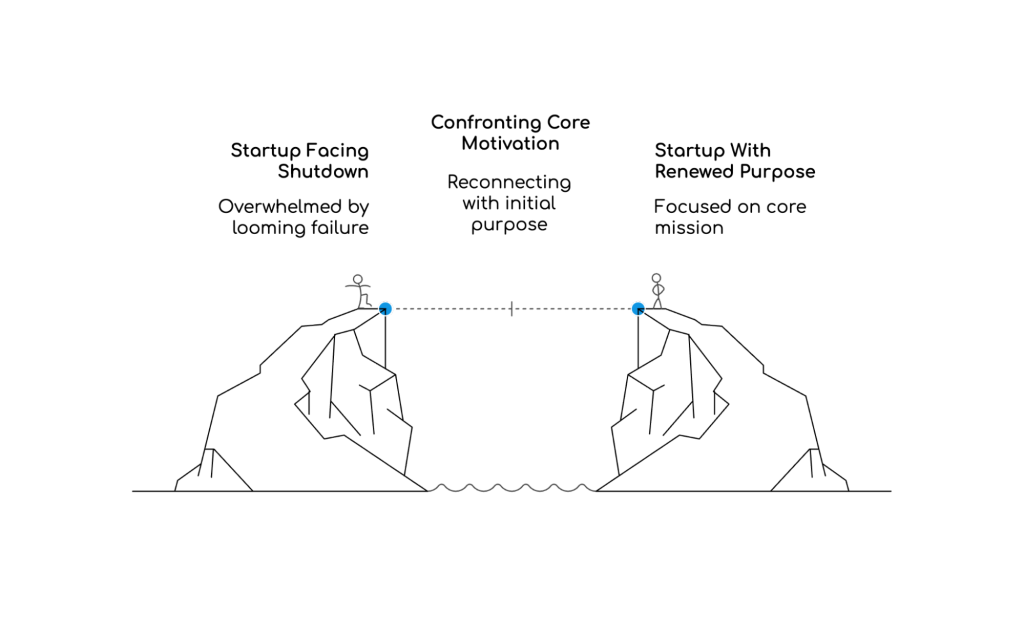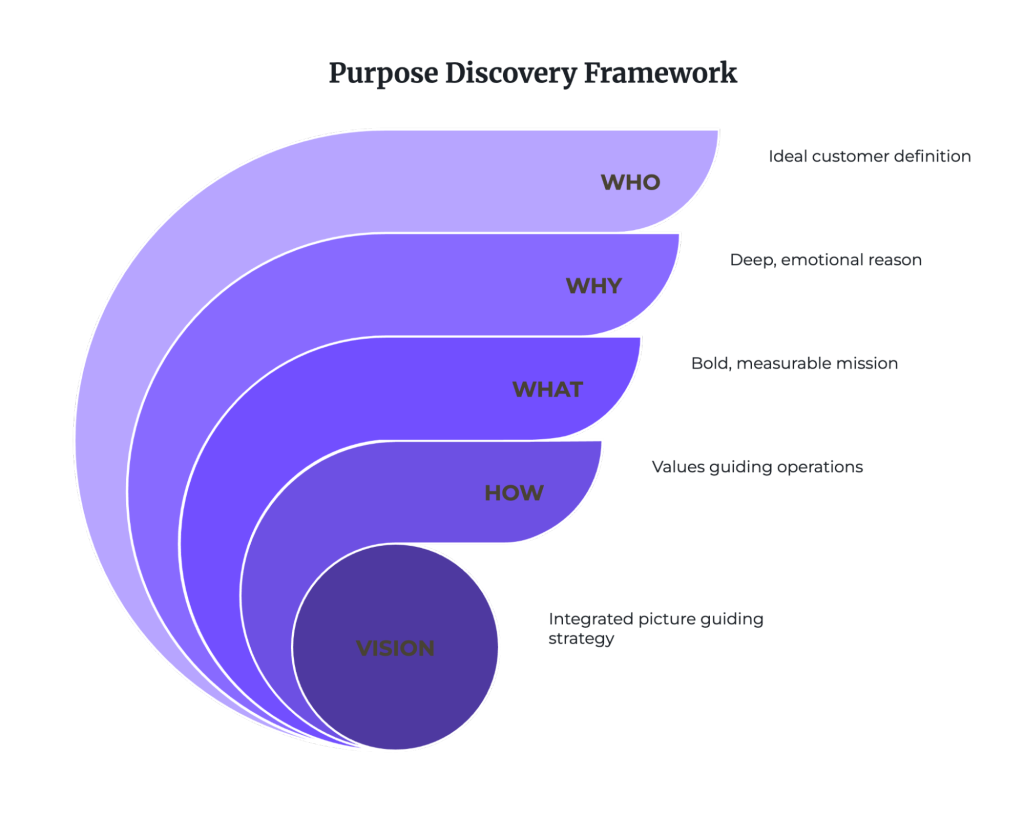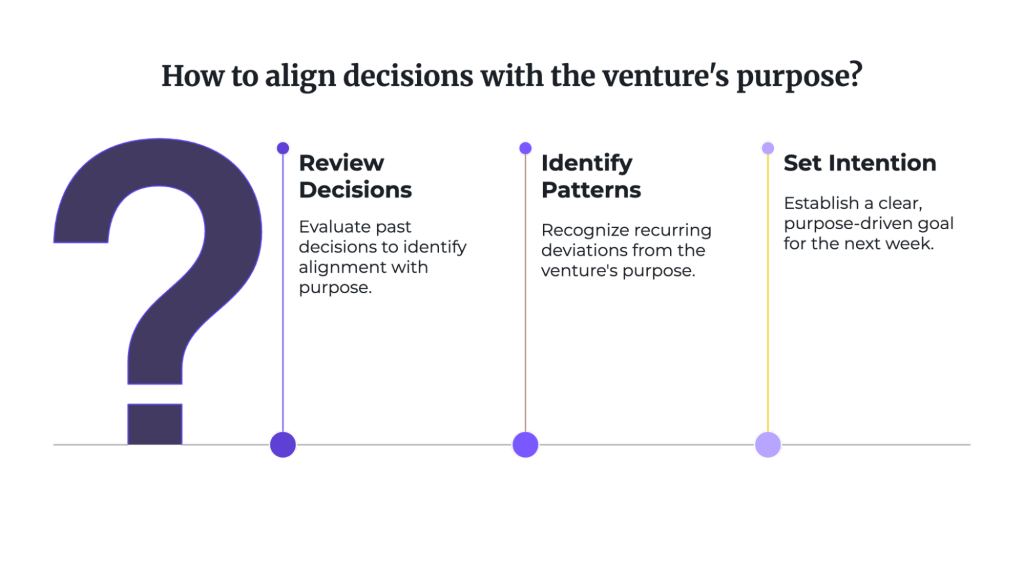The Night Everything Changed
It was 2 AM, and I was sitting in my home office, paralyzed by the weight of a decision that could end my startup. We had less than three months of runway left, and our lead investor had just suggested we shut down. As I stared at the financial projections on my screen, my mind raced through every possible scenario, each one darker than the last. Then, something shifted. I closed my laptop, took a deep breath, and asked myself a question I’d been avoiding for months: “Why did I really start this company?”
That moment of forced stillness—what I now recognize as accidental mindfulness—saved not just my startup, but transformed how I approach leadership entirely.

The Hidden Crisis of Disconnected Leadership
Most entrepreneurs start their journey fueled by a compelling vision, a “why” that burns bright enough to push them through impossible odds. But somewhere between fundraising rounds and product pivots, that initial spark gets buried under operational demands and daily firefights. We become so focused on what we’re building that we forget why we’re building it.
This disconnection creates a dangerous void. Without a clear sense of purpose anchoring our decisions, we’re left navigating by external metrics alone—revenue targets, user growth, investor expectations. These metrics matter, but when they become our only compass, we lose the very thing that makes entrepreneurial leadership sustainable: the ability to tap into something larger than ourselves.
Recent neuroscience research demonstrates that mindfulness actually changes brain structures, particularly in areas involved in decision-making and self-awareness. A groundbreaking study by Ashridge Executive Education found that just 10 minutes of mindfulness practice daily significantly improved leaders’ abilities to be resilient, collaborative, and equipped to lead in complex times. The study of 57 senior business leaders showed that through developing an ability to respond rather than react, participants improved critical skills like focus, adaptability, and emotional regulation.
For startup founders operating in fast-paced, uncertain environments, this isn’t just helpful—it’s essential. Mindfulness serves as a powerful tool for enhancing focus, reducing stress, and fostering the resilience needed to navigate constant change.
Understanding Mindful, Purpose-Driven Leadership
Mindful leadership isn’t about meditation retreats or burning incense in the office (though if that works for you, go for it). At its core, it’s about being intentionally present to what’s happening in the moment, enabling you to respond thoughtfully rather than react impulsively to challenges.
But mindfulness alone isn’t enough. It needs to be paired with a clear sense of purpose—what Simon Sinek calls your “Why.” His Golden Circle model suggests that innovative businesses and strong leaders don’t start by asking what they do, but rather why they do it. This WHY becomes the foundation for everything else.
Research from Deloitte reveals that purpose-driven companies demonstrate higher market share gains and grow three times faster than their competitors. When customers can connect with a brand’s purpose, they’re four times more likely to trust it, buy from it, and recommend it to others.
The combination of mindfulness and purpose creates what I call “grounded leadership”—the ability to stay centered in your mission while remaining flexible in your methods. It’s what allows entrepreneurs like Blake Mycoskie of TOMS Shoes to build companies that generate both profit and positive impact, or Yvon Chouinard to transform Patagonia into a force for environmental good while maintaining business success.
My Journey from Reaction to Response
Let me take you back to that sleepless night in my home office. After years of running on adrenaline and ego, I’d lost touch with why I’d started my company. The original vision of helping businesses optimize their cloud infrastructure had morphed into a desperate scramble for survival. Every decision felt like life or death because I’d forgotten the larger purpose driving it all.
That night, I did something I hadn’t done in months—I stopped thinking and started feeling. I remembered the excitement I’d felt when I first identified the problem we were solving. I recalled conversations with early customers who told us how our solution had transformed their operations. Most importantly, I reconnected with my deeper purpose: creating technology that empowers other entrepreneurs to build their dreams without the infrastructure nightmares I’d experienced.
This wasn’t just nostalgia—it was a fundamental reorientation. As research published in the Journal of Business Venturing shows, mindfulness increases entrepreneurs’ ability to identify new opportunities and make better decisions about which ones to pursue. By stepping back and reconnecting with purpose, I could see our situation with fresh eyes.
The next morning, instead of accepting defeat, I called the investor with a new proposal. We would pivot our approach but stay true to our core mission. That conversation, grounded in purpose rather than panic, led to additional funding and eventually to our successful acquisition. But more importantly, it taught me that sustainable leadership requires both presence and purpose.
Building Your Practice: Frameworks for Mindful, Purpose-Driven Leadership
Creating a mindful, purpose-driven leadership practice doesn’t require a complete lifestyle overhaul. Here are practical frameworks you can implement immediately:
1. The Daily Purpose Check-In
Marc Benioff, CEO of Salesforce, credits daily meditation and the Buddhist concept of “beginner’s mind” with keeping him grounded after 25 years at the helm. His practice is simple but powerful:
- Start each day with 5 minutes of quiet reflection
- Ask yourself: “What is my intention for today?”
- Connect that intention to your larger purpose
- Carry this awareness into your first meeting

2. The Purpose Discovery Framework
Jim Collins provides a comprehensive framework for discovering purpose:
- WHO: Define your ideal customer
- WHY: Identify the deep, emotional reason that matters
- WHAT: Clarify your mission—the bold, measurable goal
- HOW: Establish values that guide operations
- VISION: Create an integrated picture that guides strategy
Start by answering these questions in writing, then refine them through conversation with your team and trusted advisors.

3. The 3R Response Method
When facing high-pressure decisions, use this mindfulness-based approach:
- Recognize: Notice your emotional state without judgment
- Reset: Take three conscious breaths to create space
- Respond: Choose your action based on purpose, not pressure
This simple framework, which I detail in my book, has helped countless entrepreneurs avoid reactive decisions that could derail their ventures.

4. The Weekly Realignment Practice
Every Friday, set aside 30 minutes for what I call “purpose realignment”:
- Review the week’s major decisions
- Ask: “Which choices aligned with our purpose? Which didn’t?”
- Identify patterns of drift
- Set one purpose-driven intention for the following week
Companies like Google have found that structured mindfulness programs can reduce anxiety by 37%, while Aetna’s program led to a 28% reduction in stress and 62 minutes of increased productivity per employee weekly.
Lorem ipsum dolor sit amet, consectetur adipiscing elit. Ut elit tellus, luctus nec ullamcorper mattis, pulvinar dapibus leo.

The Transformation You Can Expect
Implementing mindful, purpose-driven leadership isn’t just about feeling better—it creates measurable business impact. Based on research and my own experience, here’s what you can expect:
Immediate Benefits (Within 2 Weeks)
- Reduced decision fatigue through clearer priorities
- Improved team morale as purpose becomes more visible
- Better stress management in high-pressure situations
Medium-term Results (1-3 Months)
- Enhanced ability to identify aligned opportunities
- Stronger stakeholder relationships built on authentic connection
- Increased resilience during setbacks and pivots
Long-term Transformation (6+ Months)
- Sustainable motivation that transcends external validation
- A company culture rooted in shared purpose
- The ability to inspire others through grounded leadership
Research on entrepreneurship and mindfulness found that mindfulness significantly predicted key entrepreneurial traits including creativity, vision, and proactivity. Leaders who practice mindfulness report not just better business outcomes, but deeper satisfaction with their entrepreneurial journey.
Your Next Step: From Survival to Purpose
The entrepreneurial journey will always include challenges, setbacks, and moments of doubt. But when you lead from a place of mindful purpose, these obstacles become opportunities for growth rather than threats to survival.
If you’re ready to transform your leadership approach and reconnect with the deeper purpose driving your venture, I invite you to dive deeper into these concepts in The Inside-Out Entrepreneur. Chapter 6, “Building Spiritual Bedrock,” explores how to develop the inner foundation that makes purpose-driven leadership sustainable even in the toughest times.
Get your copy today and discover how to build not just a successful business, but a meaningful entrepreneurial life that aligns with your deepest values and aspirations.











Responses